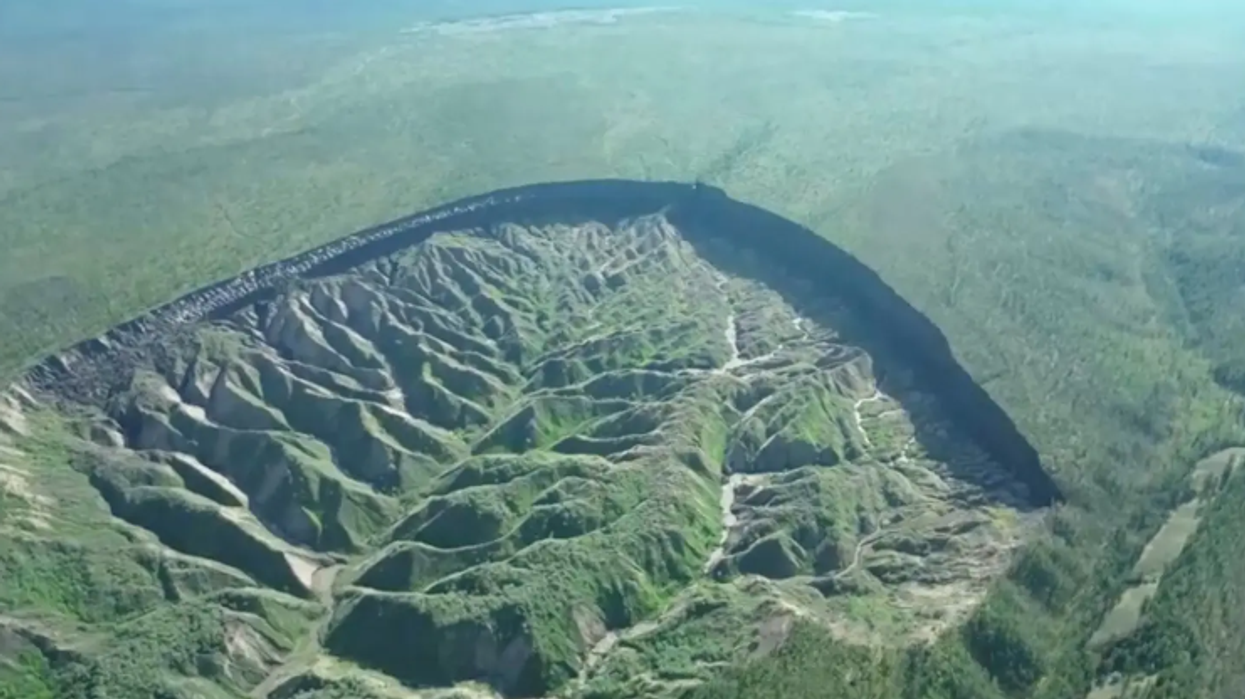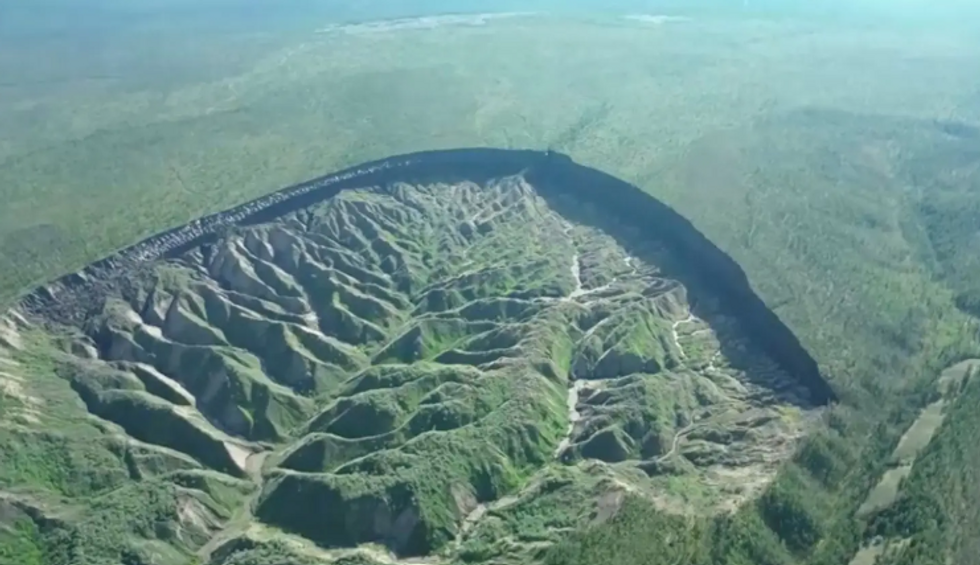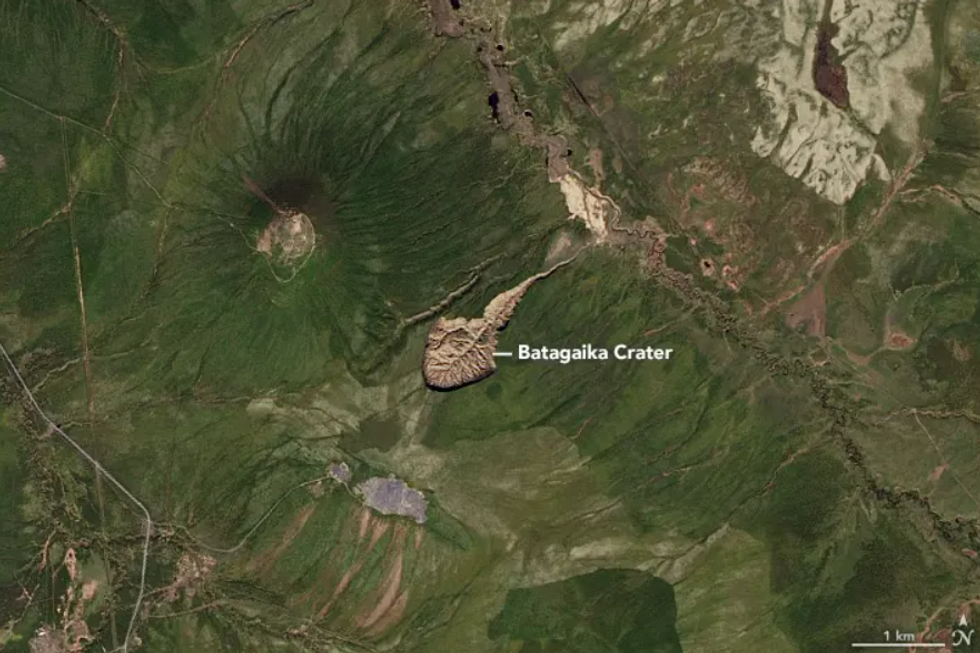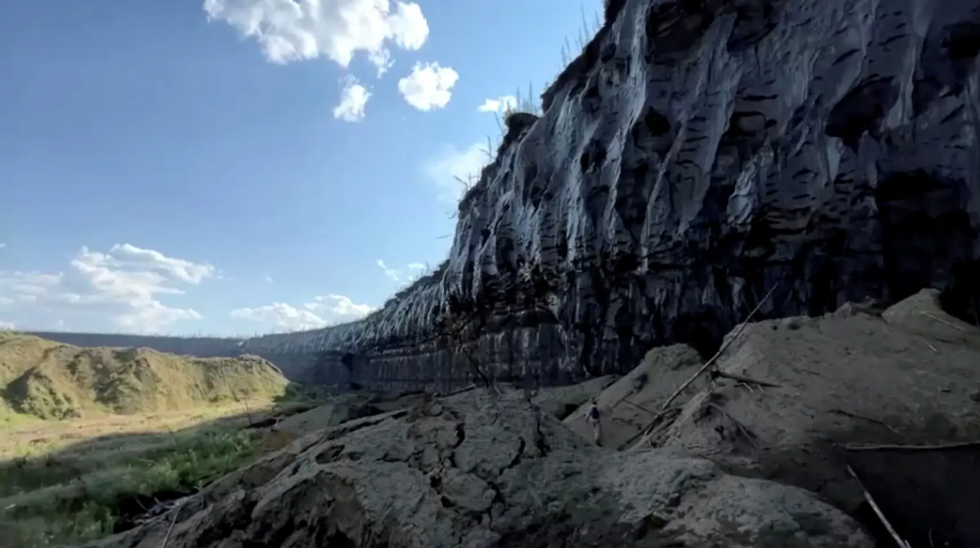'Gateway to hell' in Siberia 'rapidly expanding', experts warn as landmark can be seen from space

A giant crater in Siberia which can be seen from space is “rapidly expanding” due to climate change
|Reuters

The crater's ever-increasing size will pose problems for the surrounding habitat, scientists say
Don't Miss
Most Read
Latest
The giant “Gateway to Hell” crater in Siberia which can be seen from space is “rapidly expanding” due to climate change.
Scientists say that the 200-acre wide, nearly 300-foot-deep Batagaika crater's increasing size is posing problems for the surrounding habitat.
In a recent study, it was reported that the ginormous crater has grown by 35 million cubic feet (around one million cubic meters every year).
It was first formed in the 1960s, when melting “permafrost” soil within the Siberian tundra began to release tons of previously frozen methane, a powerful greenhouse gas, into the planet’s atmosphere.
 A giant crater in Siberia which can be seen from space is “rapidly expanding” due to climate change | Reuters
A giant crater in Siberia which can be seen from space is “rapidly expanding” due to climate change | Reuters The crater was first detected on images taken in 1991 and has been growing in size ever since, as global warming causes permafrost to melt.
Glaciologist Alexander Kizyakov, the study's lead author, said that it “demonstrates how quickly permafrost degradation occurs”.
The research, published in Geomorphology, discovered that the rate of methane and other carbon gasses released as the crater grows has reached 5,000 tons per year.
Kizyakov said that soon enough, the “Gateway to Hell” will leak all of its remaining greenhouses gases.
LATEST DEVELOPMENTS:

A recent computer-generated image shows its current size
|Nasa
He said that there is little room for it to grow deeper as the permafrost melt has almost reached the bedrock at the bottom.
This will likely cause problems for the nearby Batagay River, as it will increase erosion on the riverbank.
However, Kizyakov, who teaches at Lomonosov Moscow State University in Russia, said that the melt could continue but sideways.
“Expansion along the margins and upslope is expected,” Kizyakov told Atlas Obscura.

The crater was first detected on images taken in 1991 and has been growing in size ever since
|Reuters
“This lateral expansion is also limited by the proximity of bedrock, the top of which apparently rises to the saddle between the nearest mountains about 550 meters [1805 feet] uphill,” he explained.
Nikita Tananaev, a researcher at the Melnikov Permafrost Institute in Yakutsk, Russia, who was not involved in this study, told the publication that he’s not surprised by the crater’s expansion.
“As we observe the current climate over the Verkhoyansk Range, in the vicinity of Batagay megaslump, there is no surprise that the feature is growing this fast,” Tananaev says.
“Higher retreat rates are expected to continue since we expect some more years with extremely high air temperature in this region to occur,” he stated.










